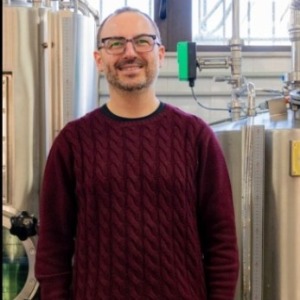8th Edition of Euro Global Conference on
Food Ozonation
Food ozonation, also known as ozone treatment or ozonization, is a food preservation technique that utilizes ozone gas (O3) to disinfect, sanitize, and extend the shelf life of food products. Ozone is a powerful oxidizing agent that effectively kills bacteria, viruses, fungi, and other microorganisms by disrupting their cell membranes and biochemical processes. Ozone treatment is commonly used in the food industry for various applications, including water disinfection, surface sanitation, and food processing. Ozone can be dissolved in water to create ozonated water, which is used to wash fruits, vegetables, and seafood to remove surface contaminants and reduce microbial contamination. Ozone gas can also be applied directly to food surfaces or used in enclosed chambers for disinfection and decontamination purposes. Ozone treatment is particularly effective for controlling pathogens such as Salmonella, Escherichia coli (E. coli), Listeria monocytogenes, and molds that can cause foodborne illness and spoilage. Unlike chemical sanitizers, ozone leaves no harmful residues or by-products on food surfaces, making it a safe and environmentally friendly alternative for food processing. Ozone treatment can extend the shelf life of perishable foods by reducing microbial growth and inhibiting enzymatic browning and oxidation reactions that cause food spoilage. In addition to its antimicrobial properties, ozone has been shown to degrade pesticides, fungicides, and other chemical residues on food surfaces, further enhancing food safety. Ozone treatment is widely used in the meat, poultry, seafood, fruit, and vegetable processing industries to meet regulatory requirements for food safety and quality assurance. However, ozone treatment requires careful control and monitoring to ensure effective disinfection without compromising food quality or safety. Factors such as ozone concentration, contact time, temperature, humidity, and food composition must be optimized to achieve desired microbial reduction levels while minimizing any adverse effects on sensory attributes and nutritional quality. Ozone is a highly reactive gas that decomposes rapidly into oxygen, leaving no residues or harmful by-products in treated foods. Despite its effectiveness, ozone treatment has some limitations and challenges, including equipment costs, energy consumption, and regulatory considerations. Ongoing research and development efforts focus on optimizing ozone treatment processes, improving equipment efficiency, and addressing regulatory requirements to support its broader adoption in the food industry. Overall, food ozonation is a promising technology for enhancing food safety, extending shelf life, and reducing chemical residues in food products, contributing to a safer and more sustainable food supply chain.

Said Bouhallab
INRAE, France
Giovanni De Francesco
University of Perugia, Italy
Ombretta Marconi
University of Perugia, Italy
Alex Martynenko
Dalhousie University, Canada
Ana Isabel Najera
University of the Basque Country EHU, Spain
Marcin A Kurek
Warsaw University of Life Sciences, Poland


